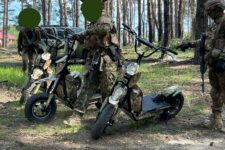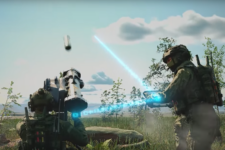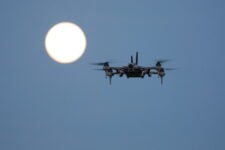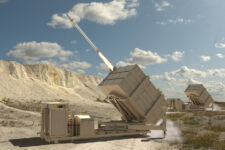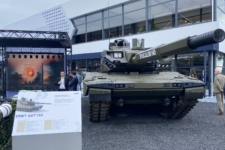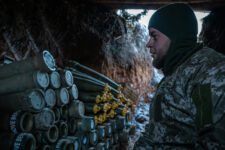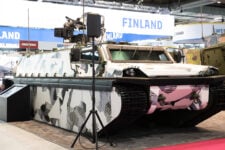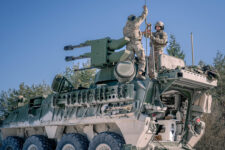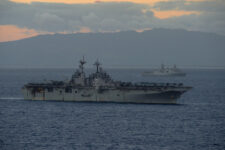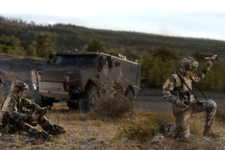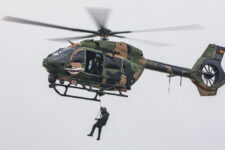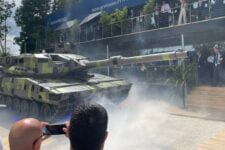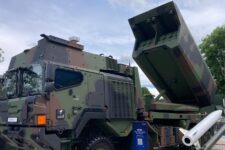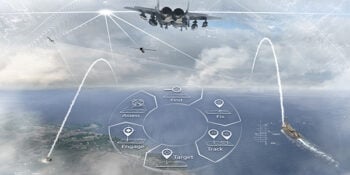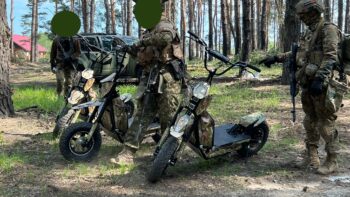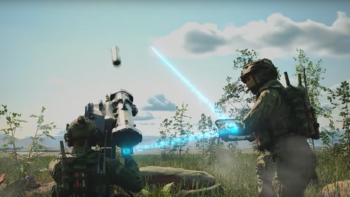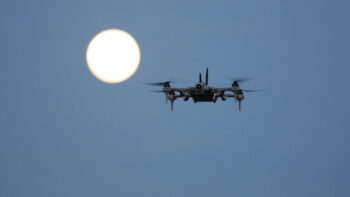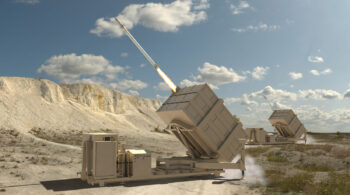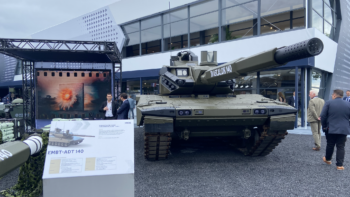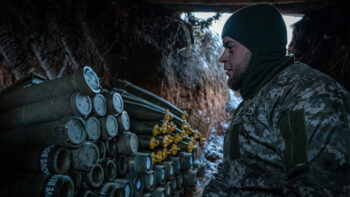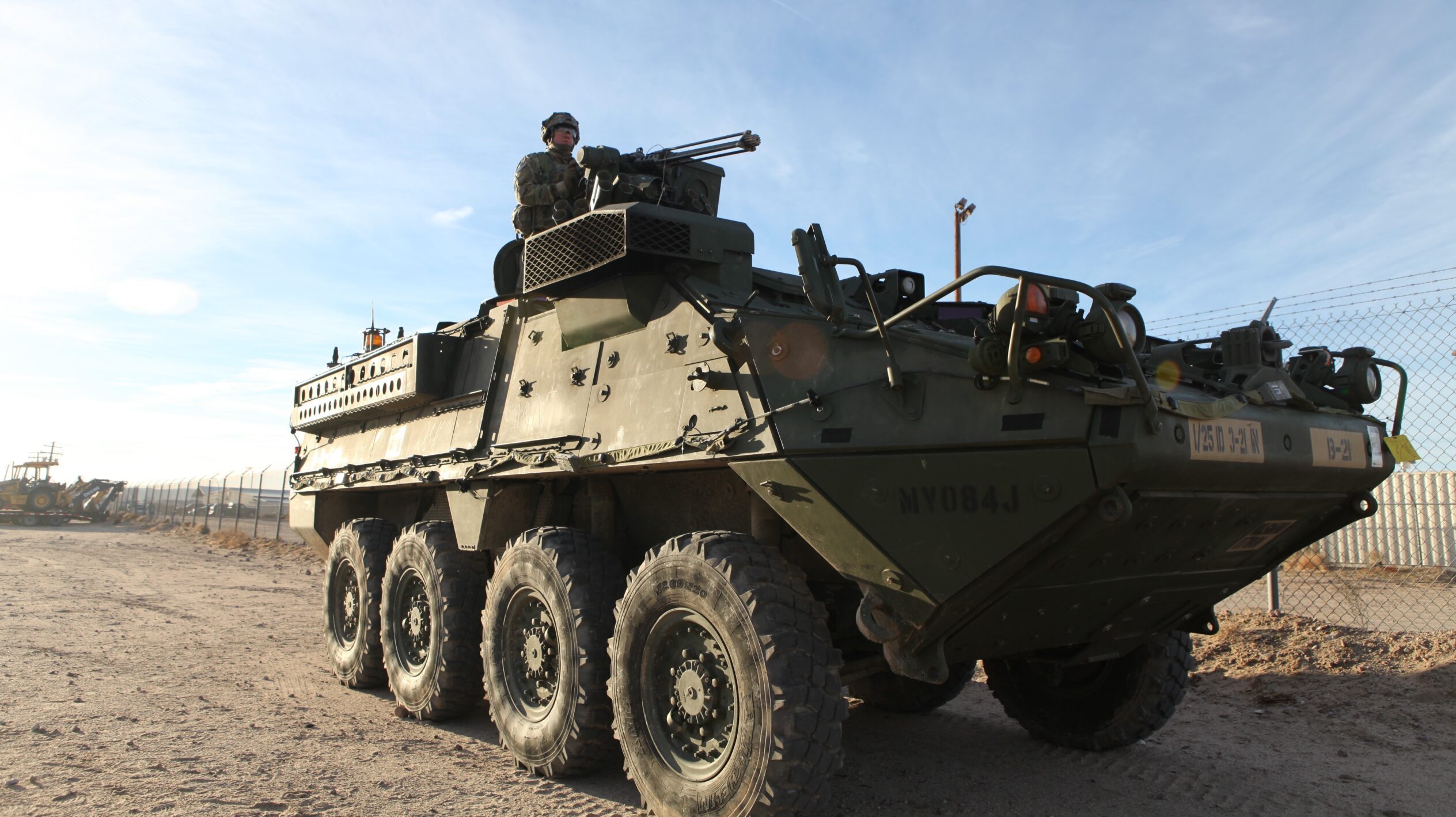
Army Spec. Franklin assigned pulls security on a forward operating base at the National Training Center at Ft. Irwin, Calif., Jan. 10, 2017. (US Army/Sgt. Michael Spandau)
WASHINGTON — In all likelihood, the US Army still has not found an active protection system (APS) to integrate onto its Stryker fleet, even after recent testing with a new candidate, according to a two-star general.
For years, the service has been on the hunt for APSs to integrate onto M1 Abrams main battle tanks, Bradleys and Strykers to protect them from incoming threats like rocket propelled grenades. While it has now picked systems for those first two fleets, the quest to find one for the Stryker is still plagued by size, weight and power constraints.
“We have been unable to find a technical solution adequate for Stryker, although we continue to keep an eye on what the commercial space may bring and [what] our partners in the Army Combat Capabilities Development Command are working on,” Maj. Gen. Glenn Dean, the service’s Program Executive Officer for Ground Combat Systems told Breaking Defense during a Dec. 1 interview.
Dean’s comments come after the service completed limited characterization testing in September with a possible APS candidate for Styker called StrikeShield, a hybrid hard-kill and armor solution by Rheinmetall and its US partner Unified Business Technologies. An official with United Business Technologies said the team has not received the official test results and will hold off on commenting until the results are officially released.
Dean said that while he has not seen the final report, the “preliminary” findings suggest that if StrikeShield is integrated onto Strykers, those same size, weight, power and performance challenges remain.
“I would boil [it] down to core platform integration challenges,” he added.
The Army’s quest to outfit its combat vehicles with APS has been long and winding, but in 2016 the service decided it needed an interim solution for three vehicle fleets. It eventually opted for two systems from Israeli firms: Buying Rafael’s Trophy APS for the M1A2 Abrams System Enhancement Package version 3 (SEPv3) and picking Elbit Systems’ Iron Fist Light Decoupled for the Bradley vehicle. However, Dean confirmed that the money is still not in place to move forward acquiring the Elbit APS.
When it comes to the Stryker, so far, the service has struck out finding a system including with its first contender the US-made Artis Iron Fist.
While both Dean and Brig Gen. Geoffrey Norman — the director of the Next-Generation Combat Vehicle Cross Functional Team — said the APS need for all three fleets remain valid, they noted that other options are on the table too. More specifically, Norman cited a closer examination of overall formation protection.
“We’re taking a hard look at formation protection,” Norman said during that same Dec. 1 interview. “So, what capabilities could be on different vehicles that provide protection for the formation: Every vehicle doesn’t need to have every type of system,” he later added.
While the one-star general didn’t detail the timeline or options under consideration, he said there is the desire to manage and mask vehicle signatures “so we’re harder to see in the first place.”
“But, fundamentally, we haven’t changed our approach to vehicle protection and formation protection, we’re continuing to work down the challenges and give solutions,” Norman added.
Ukrainian units want more sneaky battlefield e-scooters, Latvian firm says
A letter from a Ukrainian unit says the scooters have received “very positive feedback” from soldiers who are using them for “combat tasks,” according to Latvian scooter-maker Mosphera.
